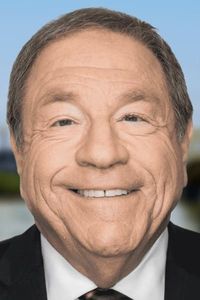Amy Toensing is a highly acclaimed American photojournalist and filmmaker, whose impressive career has been marked by a remarkable blend of artistic vision and journalistic integrity. Born to Victoria Toensing, a seasoned lawyer and prominent GOP operative, and step-daughter of her law partner Joseph DiGenova, Amy has been surrounded by the world of politics and law from a young age.
As she grew older, Amy's passion for storytelling and visual communication led her to pursue a career in photojournalism, which has taken her to various corners of the globe. Her work has been featured in numerous publications and exhibitions, earning her widespread recognition and acclaim within the industry.
Today, Amy resides in the picturesque Hudson Valley of New York with her husband Matt Moyer, also a talented photojournalist. Together, they continue to produce thought-provoking and visually stunning work that inspires and informs their audiences.
Amy Toensing's academic journey began with a Bachelor's degree in human ecology from the esteemed College of the Atlantic in Maine, a prestigious institution that laid the foundation for her future success. Prior to commencing her professional career in 1994, she honed her skills as a staff photographer at her hometown paper, The Valley News in New Hampshire, where she had the opportunity to develop her craft and build a strong portfolio. Subsequently, she made the transition to covering the nation's capital and the White House during the presidency of Bill Clinton, a pivotal moment in her career that allowed her to work alongside the esteemed journalists of The New York Times.
Amy Toensing, a photographer with a keen eye and adventurous spirit, decided to leave Washington D.C. in the year 1998 to further her education and pursue a master's degree in the esteemed School of Visual Communication at Ohio University.
Amy Toensing, a renowned photographer, has amassed a vast portfolio of work, which showcases her exceptional skill and dedication to capturing the human experience. Her extensive body of work includes documenting the devastating aftermath of Hurricane Katrina, a catastrophic event that left a lasting impact on the city of New Orleans and its people.
Toensing's portfolio also highlights her fascination with the intersection of cultures, as evident in her photographs of Muslim women living in Western society. These images provide a unique glimpse into the lives of women who are navigating two distinct worlds, one of their heritage and another of their adopted culture.
One of Toensing's most ambitious projects was her four-year endeavor to document the lives of Indigenous Australians. This comprehensive project was published in the June 2013 edition of National Geographic, showcasing her unparalleled ability to capture the essence of a people and their culture.
Amy Toensing is a multifaceted individual who has made a significant impact in the world of photography beyond her own acclaimed work. One of her most notable pursuits is her dedication to teaching photography to children and young adults in underprivileged communities.
Through her collaborations with various nonprofit organizations, including Vision Workshops, Amy has had the opportunity to work on numerous projects that aim to empower young individuals from diverse backgrounds. For instance, she has traveled to Maine to teach photography to Somali and Sudanese refugees, and to Baltimore to work with Burmese refugees.
Amy's teaching endeavors have not been limited to the United States, as she has also ventured to Islamabad, Pakistan, to instruct young Pakistanis in the art of photojournalism. Her students have been from various communities, and she has worked closely with them to capture their own stories and experiences through photography.
Amy's passion for teaching and her commitment to empowering young individuals through photography have made a significant difference in the lives of many young people. Her work has not only helped to develop their photographic skills but has also provided them with a platform to express themselves and tell their own stories.











